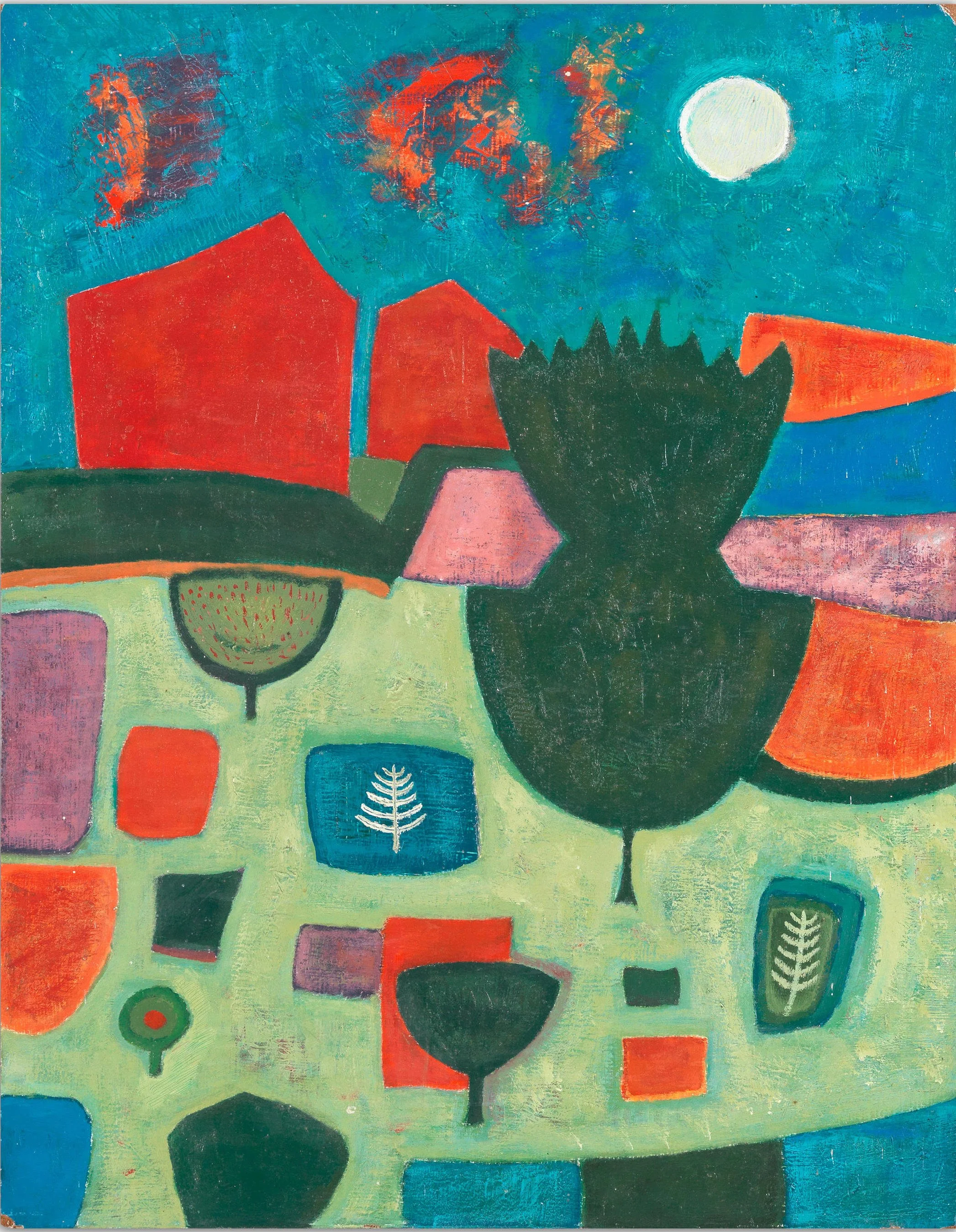
John Christopherson
1921 - 1996
John Christopherson
John Christopherson (1921–1996) was a painter of small, dreamlike townscapes and abstract works that marry apparent naïveté with quiet sophistication. Born in Blackheath, London, he began his working life at Shell-Mex House in 1938, a moment when modern art was entering advertising. After a wartime illness he moved to County Hall, where a print of Paul Nash’s Wood on the Downs — with its primaeval landscape and magical moon — left a lasting mark.
From boyhood, he was fascinated by the idea of antiquity. He was interested in ancient stones, pavements, mosaics, archaeological sites, walls, and buildings that had gradually changed and been eroded by time. In 1950, while a civil servant at the Geological Museum in South Kensington, he discovered Art Brut, began corresponding with Jean Dubuffet, and met Jacob Epstein. Visits to West End galleries followed. He later said it was a revelation that such a “magical world co-existed” with the prosaic life of rationing and coupons, and he resolved to enter it. His paintings mine the poetry of age and weathering—above all, walls layered with faded posters and graffiti, the “forlorn poetry of the unregarded.” Although Cornish by ancestry and a regular visitor to St Ives, his key influences were Continental.
In 1959 Christopherson left the civil service to paint full-time. He began exhibiting in 1961, showing at the Leicester Galleries, the Marjorie Parr Gallery, Agnew’s, and England & Co., establishing a steady presence through the 1960s and after.
His final lifetime exhibition was a retrospective at Woodlands Art Gallery, Blackheath, in December 1995. He died in 1996. A memorial exhibition at England & Co. followed in 1997, accompanied by a publication on his life and work. His correspondence and scrapbooks are held in the Tate Archive.
Coming soon
Ring Round the Moon
Valley of Signs
SOLD
“Christopherson’s pictures linger in the memory. His image world is a distillation of cultural debris sifted with poetic intensity. His pictures are a microcosm of his tastes and obsessions. Each small painting is haunted by a sense of déjà vu, the ordinary becomes extraordinary. The subtle depths of layers of glazes are incised with the mysterious markings of a private language. ”
“Christopherson’s point of departure is some discreet corner of the urban townscape. He imposes a melancholy geometry, transforming it into a city deserted by its inhabitants who have left behind them, their only monument, some reticent graffiti. His colour is as private as his imagery. His pictures whisper. They are worth listening to.”


